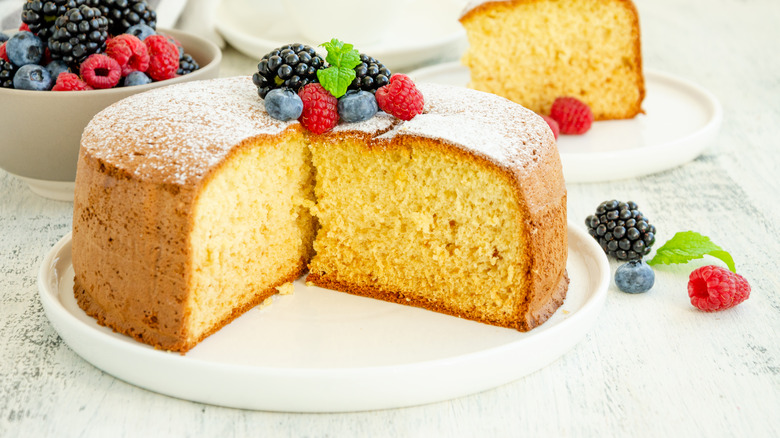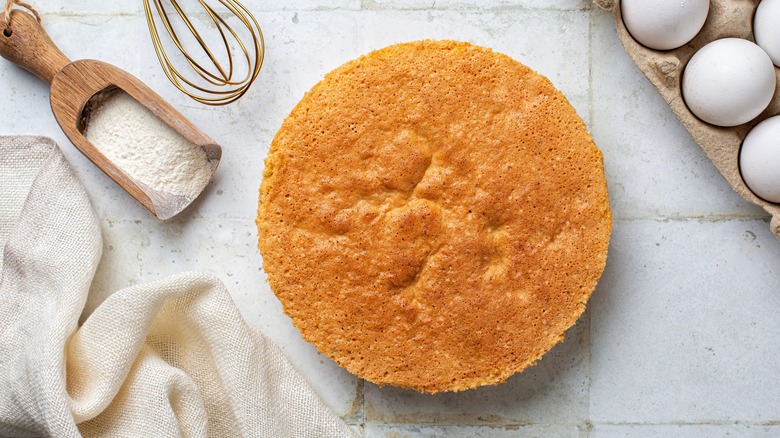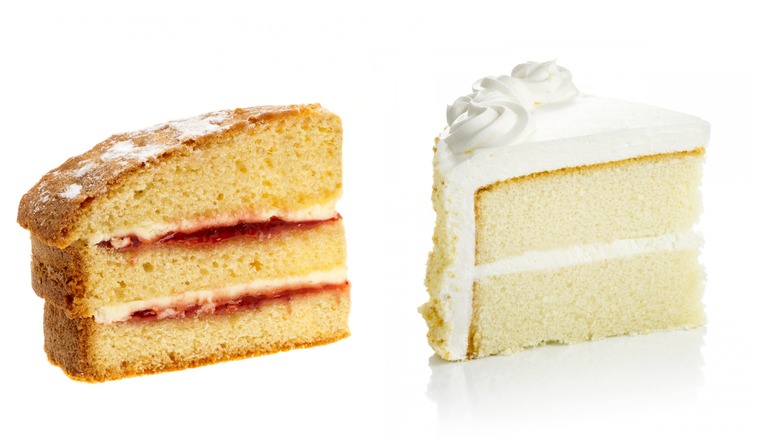What's The Actual Flavor Of Yellow Cake?
There are a lot of really complicated cakes out there with layers upon layers of intricate flavors, all decked out in outrageously detailed fondant. That's all well and good, but sometimes the basics are best, and when it comes to simple cakes, two varieties reign supreme: Chocolate cake and yellow cake. The first is as straightforward as can be — the name of chocolate cake tells you precisely what you're going to taste in each forkful — but the second is more enigmatic. Nobody will argue that yellow cake is a super complex thing, and at the same time, can you actually say what it tastes like? The name tells us nothing about its flavor or ingredients, just its color.
Most people pressed on the flavor of yellow cake say it's vanilla, and it turns out that's basically the truth, but not the whole truth. If you look at any yellow cake recipe or boxed cake mix, you'll find that vanilla extract is the only obvious flavoring agent, but this is also true of other types of cake, and they don't taste the same. White cake, the variety often used for wedding cakes and the base of funfetti, is vanilla-flavored, but it's much subtler than yellow cake. Something gives yellow cake a much stronger, deeper flavor — a kind of custardy richness that lingers on the palate in a way other vanilla-based cakes don't. The key to that richness is the same thing that makes the cake yellow.
Fat is the key to yellow cake's flavor
Yellow cake gets its color from egg yolks. This particular variety of cake uses whole eggs and sometimes additional yolks to give it its namesake hue, but that's not all. Another fatty ingredient enhances the vibrant color: Butter, something that yellow cake also includes a generous amount of. And while these two ingredients make their presence known boldly through the cake's appearance, that's the least important of their contributions. Egg yolks and butter are rich sources of fat, and fat is the key to yellow cake's intense flavor.
Fat has a tremendous impact on how flavor compounds are released in our mouths, so much so that we can perceive the same flavors differently depending on how much fat is in our food. This is especially relevant in the case of yellow cake, as fat has a particularly pronounced effect on vanilla. When vanilla extract and low-fat foods combine, the flavor is released very quickly on the palate, which makes it seem mild and fleeting. On the other hand, high-fat foods dramatically intensify our perception of vanilla. To top it all off, a subtle, custardy flavor created by the egg yolks adds a final layer of depth to yellow cake.
Yellow cake versus white cake
Vanilla is all too often maligned as a mundane, uninspired flavor, but yellow cake proves that it can be delectably rich. On the other hand, eating a slice of white cake would probably have you agreeing that vanilla is rather bland. That's because the fat content of white cake is dramatically different from its yellow counterpart. For starters, white cake usually uses a mix of butter and shortening, the latter of which has a pale color that helps it live up to its name. More importantly, white cake only uses egg whites. This means there is less total fat in the cake, so the vanilla flavor doesn't come through nearly as much; plus, the added custard flavor one gets from egg yolks is completely lost.
Yellow cake also has a very different structure than that of white cake. The egg yolks thicken the batter and make the crumb more spongy. Furthermore, yellow cake is made with all-purpose flour, but white cake uses cake flour, which produces less gluten. Therefore, white cake has a very fine, delicate crumb, which can only support light, airy frostings. The denser, sturdier structure of yellow cake means you can pair it with thicker frostings, such as buttercream, further expanding its flavorful potential.


